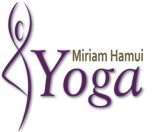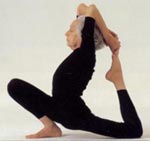Cuales han sido tus motivadores iniciales: bajar de peso, apaciguar la mente, adquirir fuerza/elasticidad, rehabilitación, estirarte un poco, respirar mejor, bajar los niveles de estrés, por que está de moda o simplemente por mera curiosidad? Sin importar qué tan profundos o banales tales motivadores puedan aparentar, cada uno posee la belleza de marcar el inicio de un camino personal. Con el tiempo, los motivadores cambian de forma hasta probablemente desvanecer, y entonces terminas por practicar Yoga nada más porque sí.
A lo largo de mi carrera como maestra de Yoga, he compartido mi enseñanza con personas cuyas edades oscilan entre los 5 y 82 años de edad. Resulta interesante observar los motivadores iniciales de cada una, en función de la edad. He descubierto el siguiente patrón, que de ninguna manera puede considerarse una norma: a menor edad, el impulso nace más de la curiosidad; a mayor edad, el impulso se asemeja más a una prescripción médica.
¿Y qué pasa en medio de este espectro de edades? ¿Qué pasa a partir de los 40, cuando no se es demasiado grande ni demasiado joven para cualquier cosa? Es un hecho que durante esta etapa algunas funciones físicas dejan de desempeñarse al 100%: el pelo pierde pigmentación, la elasticidad e hidratación natural de la piel disminuye, la digestión no es tan efectiva cómo antes, el cuerpo ya no se recupera tan fácil de una lesión, etc. Aunque los cambios suceden de forma gradual y sutil, inevitablemente todos conducen la atención hacia el propio cuerpo. Bien dirigida, dicha atención tiene sus bondades. Puede ser una invitación hacia la introspección y una oportunidad para que la mente suelte un poco el impulso del deseo, pause, y sólo observe con atención las necesidades inmediatas del cuerpo. En la mayoría de los casos el cuerpo sólo pide tiempo para restablecerse como sólo este sabe y puede hacerlo, y compasión para que el individuo lo acompañe amorosamente.
Curiosamente en sus inicios, el Yoga era una práctica exclusiva para el sanyasin: renunciante elegido por el gurú, que debió haber antes pasado por la experiencia de tener familia y sostener un hogar. Esta etapa previa de juventud es marcada por la acción total, dónde se requiere un cuerpo vigoroso que responda con toda su capacidad y una mente siempre lista para resolver. Posteriormente, el renunciante dejaba sus actividades mundanas para entregarse a la práctica, con el fin último de disolver su cuerpo y mente en lo que la tradición denomina Brahman, o El Absoluto. Para ello, era necesario conservar el cuerpo relativamente saludable, por ser vehículo para la práctica, pero primordialmente dirigir la mente hacia un estado de menor impulsividad y mayor atención, para que la Realidad Ultima se dejara ver por sí misma.
Trayendo el Yoga a nuestros tiempos, ahora abierto a cualquier persona, el practicante de edad madura puede tener el privilegio de explorarse y entrenarse para captar los cambios naturales de su cuerpo (y de su entorno), y alinear su mente a ello, retornándose a sí mismo, una y otra vez, a la realidad del momento presente. Si tenemos la valentía de abrirnos a estas percepciones, no sólo cobra sentido la práctica, si no la vida misma. Y lo mejor de todo es que esta disposición tiene la facultad de encaminarnos hacia una vejez llevadera y básicamente feliz.
Yoga After 40
Which have been your initial motivators: lose weight, calm the mind, acquire strength/flexibility, rehab, to stretch a little, breath better, lower stress levels, because its in fashion, or mere curiosity? Regardless of how profound or banal such motivators may appear, each possesses the beauty of marking the beginning of a personal path. With time, the motivators change of form until they probably vanish, and then you end up practicing Yoga just for its own sake.
Throughout my career as a Yoga Teacher, I have shared my teachings with persons whose ages oscillate between 5 and 82. It’s interesting to observe the initial motivators of each, in relation to age. I have discovered the following patter, which by no means can be considered a norm: the lesser the age, the impulse is born more from curiosity; the greater the age, the impulse resembles more a medical prescription.
And what happens in the middle of this spectrum of ages? What happens after 40, when one is neither too old nor too young for anything? It’s a fact that some physical functions stop performing at 100%: the hair looses pigmentation, the natural elasticity and moisture of the skin diminishes, digestion is not as effective as before, the body doesn’t recover easily from injury, etc. Although the changes happen in a gradual and subtle manner, inevitably all conduct the attention to ones own body. Well directed, such attention has its benefits. It could be an invitation towards introspection and an opportunity for the mind to release a bit the impulse of desire, to pause, and just observe attentively the immediate needs of the body. In most cases, the body only requests for time to reestablish in the only way it knows and can do it, and compassion so the individual can lovingly accompany it.
Curiously in its beginnings, Yoga was a practice exclusive to the sanyasin: renouncer chosen by the guru, who previously had to go through the experience of having family and being a householder. This previous stage of youth is marked by total action, where one requires a vigorous body to response with all its capacity and a mind always ready to solve problems. Subsequently, the renouncer would leave its worldly activities to deliver him self to the practice, with the ultimate purpose of dissolving his body and mind into what tradition called Brahman, or The Absolute. For that, it was necessary to keep the body in relative health, for it was the vehicle for the practice, but primarily to direct the mind to a state of less impulsiveness and more attention, so that the Ultimate Reality could reveal itself.
Bringing Yoga to our times, now open to any person, the practitioner of mature age can have the privilege to explore and train her self to capture the natural changes of her body (and of her environment), and align her mind to it, returning herself, over and over again, to the reality of the present moment. If we have the courage to open ourselves to these perceptions, not only does the practice gains purpose, but life itself. And best of all, this disposition has the faculty of heading us towards a bearable and basically happy old age.
Autor: Miriam Hamui
Miriam practica yoga desde el 2001 y enseña desde el 2008. También es educadora somática certificada por la escuela de Body Mind Movement. Ella combina sensibilidad y experiencia para guiar a sus alumnos hacia la práctica introspectiva y el movimiento consiente. De su cuerpo nace su escritura, que a su vez, inspira de regreso a su enseñanza. Conoce sus clases, eventos y libros publicados en www.miriamyoga.com





Gracias por tus consejos, tengo 44 años y empecé a ser yoga autodidacta hace poco por una crisis de ansiedad que me dio. Y como e cambiado me ayudado bastante, un abrazo y saludos desde Venezuela. Gracias por motivarnos espero seguir con el yoga por el resto de mi vida.